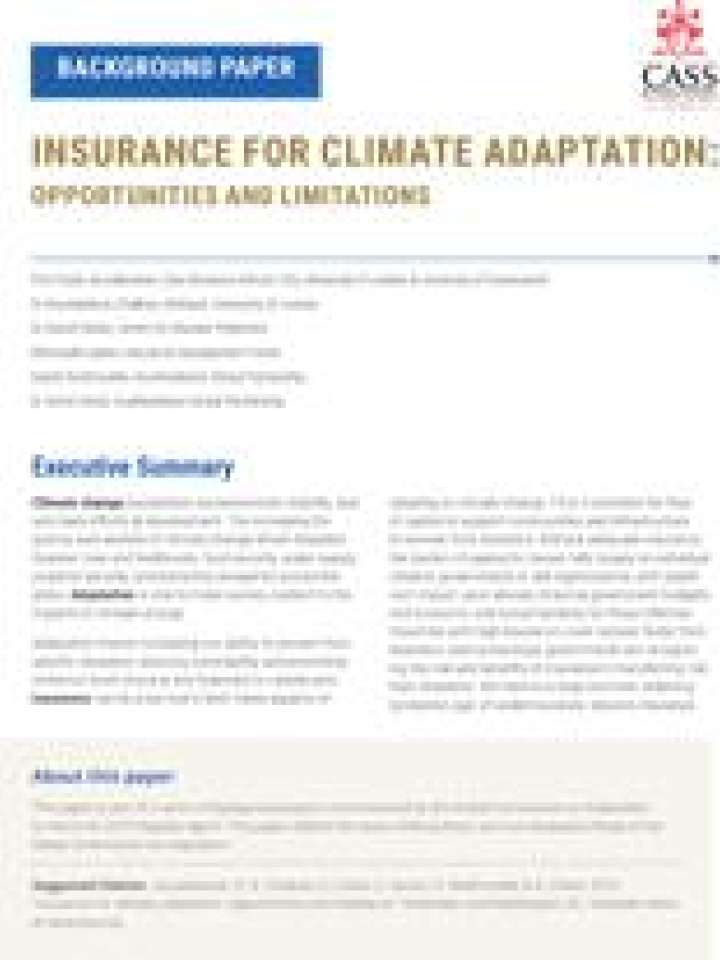Insurance for climate adaptation: Opportunities and limitations 2019
Insurance can be a key tool in reducing vulnerability and promoting resilience. Countries with high insurance coverage recover faster from disasters, and increasingly, governments are recognizing the role and benefits of insurance in transferring risk from disasters. Yet there is a large and even widening ‘protection gap’ of underinsurance.
Insurance also contributes to the wider understanding of climate-change risks, and helps promote measures that individuals and communities can use to improve their protection from climate-change-driven disasters. For example, insurance expertise in risk evaluation helps to make the economic case for flood defences, or for changes to how and where buildings are constructed.
Using insurance is a step away from crisis towards risk management, and it strengthens socio-economic resilience under a changing climate. However, it is only one of the available disaster-risk financing mechanisms. It thus needs to be considered within a broader fiscal framework that also includes international assistance, catastrophe debt drawdowns, and other financial securities, disaster reserves and budgets. Furthermore, insurance and other disaster risk financing mechanisms are only part of the solution: they need to be integrated into other resilience and adaptation measures as part of a comprehensive climate adaptation strategy. In this report, the authors make recommendations to maximize the benefits of insurance for climate adaptation.
Explore further
